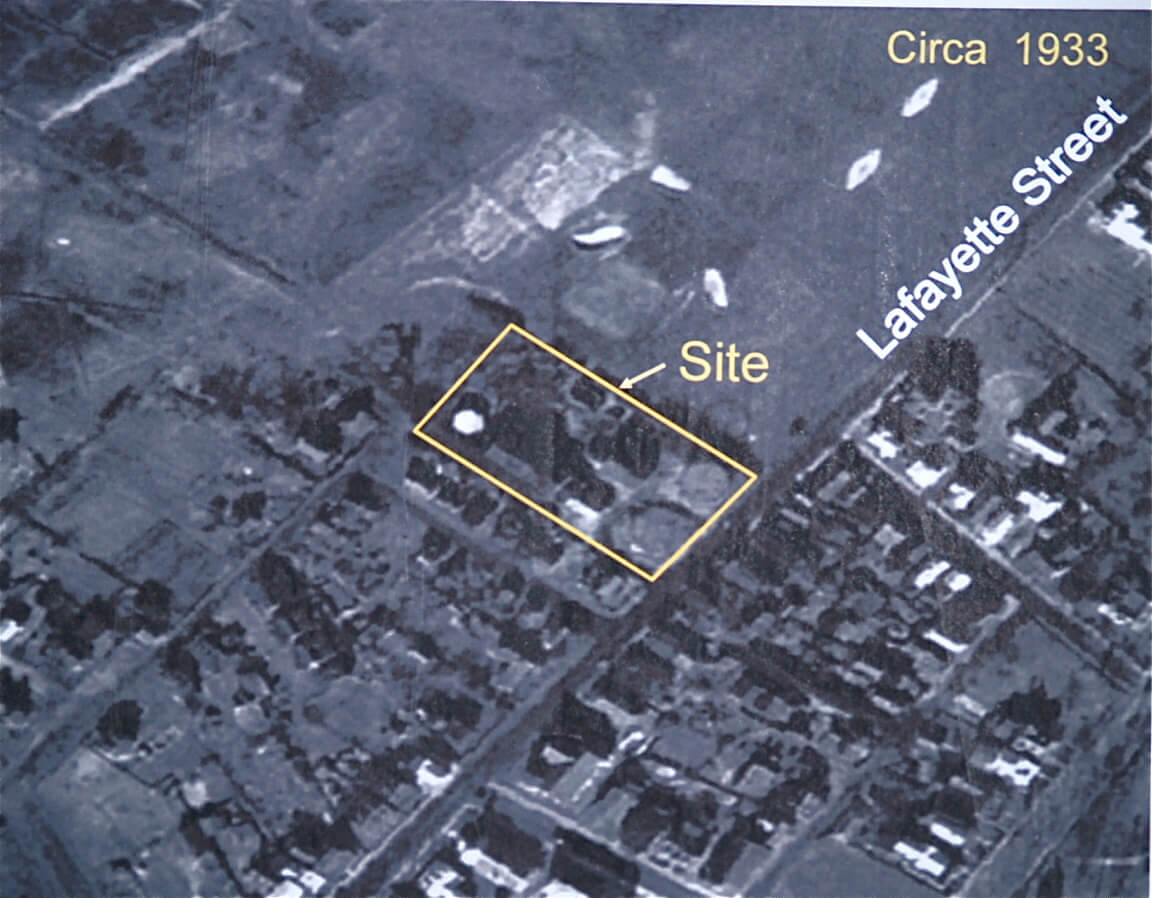CAPE MAY — Jersey Central Power and Light (JCP&L) plans for remedial action at the former gas plant site involve cleaning up what is underground through a water filtration system, rather than digging out the site and hauling away huge quantities of contaminated soil.
The volume of material that would need to be excavated to address the problem would fill about 65,000 dump trucks, said JCP&L Geologist and Project Manager Ken Seborowski.
He said JCP&L would isolate the site’s subsurface soils and contain them in an underground enclosure, which would be covered in clean soil.
JCP&L held a public information session Thursday Oct. 29 at Cape May Elementary School, a few hundred yards away from the site of a former manufactured gas plant that left contamination under ground. JCP&L inherited part of the property and a responsibility to clean up toxic chemicals below the ground.
The former gas plant site is located near the intersection of Lafayette and St. John streets, under Wise-Anderson Park and the Cape May Dog Park.
The plant manufactured gas for lighting and cooking from 1853 until 1937 when it ceased operation.
JCP&L is working with the state Department of Environmental Protection (DEP) to conduct underground investigative and engineering studies at the site and adjacent off site properties to plan for future activities to address soil and groundwater contamination.
JCP&L has been conducting environmental investigations on the site since 1985. To date, about 10,000 tons of soil have been removed from the site and adjacent properties.
JCP&L has removed subsurface soils from Wise-Anderson Park and Cape May Dog Park; surface soils from Cape May Housing Authority along Broad Street, surface and deeper soils from residential properties along the north side of St. John Street and surface and subsurface soils from Cape May Housing Authority property on Lafayette Street. Surface soils were removed at a depth from two to four feet, according to Seborowski.
While contaminated soil on the surface of the site and adjacent properties was removed and replaced with clean fill dirt, there still remains a concern of the ingestion of effected soil or the drinking of the contaminated groundwater.
Cape May’s drinking water comes from a deep aquifer located on the opposite side of Cape Island Creek, which is then passed through a desalination process, so it does not factor in the clean up, according to JCP&L.
Materials underground in the soil and groundwater on the gas plant site are by-products of the gas manufacturing process and include coal tars and oils. According to JCP&L, compounds present include benzene, toluene, ethylbenzene and xylenes and poly aromatic hydrocarbons.
Seborowski said the source of the contamination at the gas plant site may have been from spills or underground pipes breaking or leaking. He said the gas plant heated coal in an oxygen deficient environment, which prevented combustion but produced gasses.
Monitoring wells have been installed on the site and up gradient from the site since groundwater is flowing northwest toward the wetlands and Cape Island Creek. Seborowski said monitoring wells are examining both shallow and deep groundwater.
The flow of contaminated groundwater decreases the farther away one gets from the site, he said.
The geology below the gas plant area features a 50-foot zone of sand beneath which is estuarine clay ranging from 25 to 30 feet thick, said Seborowski. Beneath the clay is a groundwater aquifer.
The DEP asked JCP&L to prove the contaminants have not penetrated the layer of clay and impacted the groundwater aquifer. One monitoring well extends into the clay layer about 90 feet, said Seborowski.
He said the aquifer below the clay layer has not been impacted by the contaminants and he believed the clay was acting as a barrier to vertical migration. Groundwater is found at a depth as shallow as eight feet, said Seborowski. In the wetlands to the rear of the property, the groundwater is on the surface, he said.
DEP has granted approval for a “conceptual remedy” proposed for the site. JCP&L will encapsulate the former gas plant site as well as an area in the wetlands near the creek, said Seborowski.
A vertical barrier will be installed all along the perimeter of the gas plant which would extend from just below the surface and tie into the clay layer about 55 feet below the ground. That would include active pumping and treating, so once the wall is in place, the encapsulated area will be lower than the groundwater level.
A crane-operated auger will install the wall and as the auger is withdrawn from the ground, a material such as Bentonite mixed with cement will be injected into the ground, said Seborowski. Bentonite is often used as drilling mud for wells.
The work area will be fenced off and a worker may spray the auger with water to keep dust down, he said. An off site air monitoring station will check for dust and vapors as the auger is drilling. Seborowski said equipment would also monitor ground vibration. Use of Wise-Anderson and the Dog Park will resume after the perimeter is installed.
Five subsurface vaults, about 10 feet by feet, will be filled with a granular, activated charcoal which groundwater will flow through and remain until contamination is gone.
A secondary containment wall will extend into the wetlands and beyond and cause groundwater to pass through treatment zones. The secondary containment area will stretch from behind the former Vance’s Bar property, south to an area behind a Cape Housing Authority apartment building near St. John and Broad streets.
After going through the treatment zones, the contaminants are removed and what is discharged into the wetlands will meet groundwater quality standards, said Seborowski. Monitoring wells would be placed both inside and outside the secondary containment zone in the wetlands to measure the water quality, he said.
Seborowski said monitoring wells indicate contaminated groundwater has not flowed into Cape Island Creek. He said there is not a big tar ball under the gas plant site but borings have found areas of soil with tar residuals, then areas of clean soil and then tar material again.
“It doesn’t appear that what is in the ground is really moving any more,” said Seborowski. “It’s been in the ground for a long period of time and these materials tend to biodegrade with time and at some point the mobility stops but it still could potentially be a source of groundwater contamination.”
A geophysical survey will identify any underground structures on the site that may contain contamination, he said.
JCP&L has 17 former gas plant sites in the state requiring remediation.
Stone Harbor – Bob Ross thank you for all your years of volunteer service to the community of Stone Harbor. A Lifelong resident And property owner. 10 years on school board, 6 years on zoning board they can't…








